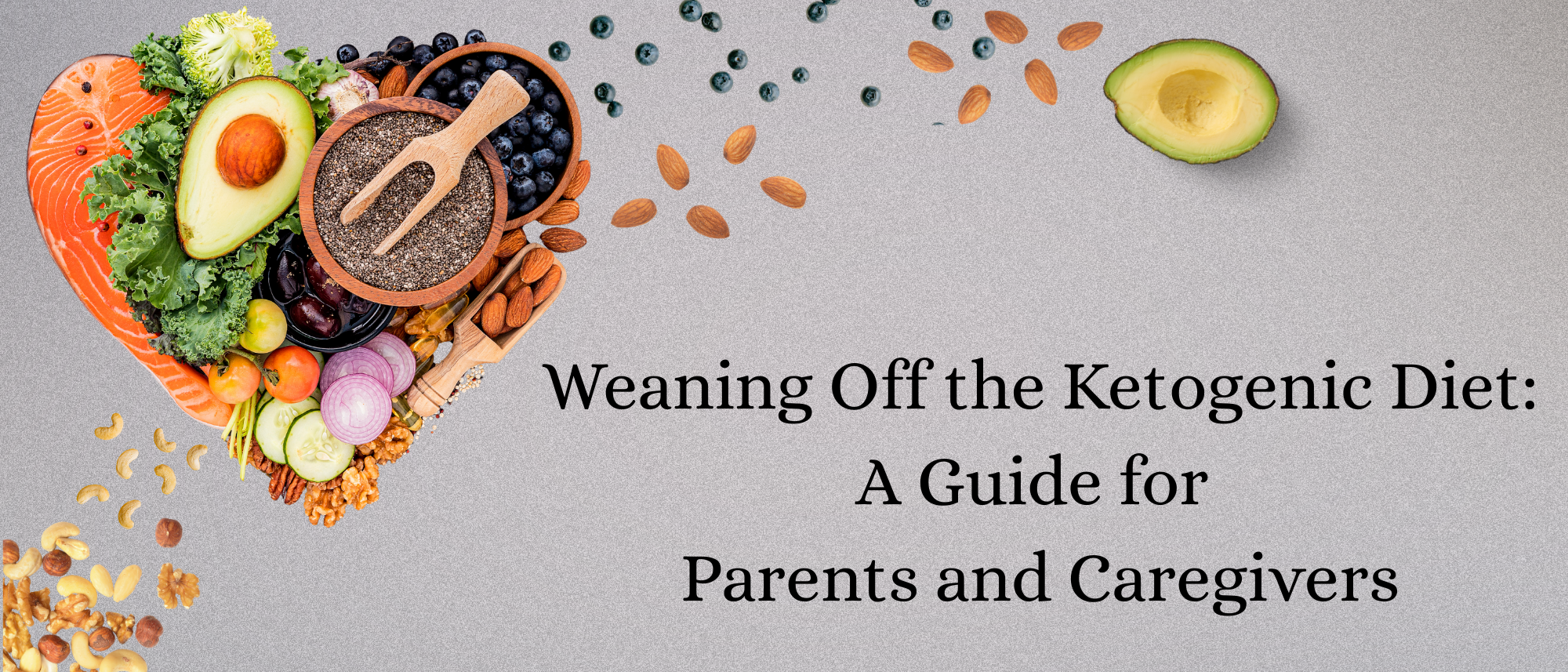Breastfeeding Options and Ketogenic Diet Therapy
/Author: Laura Dority MS RD LD
For decades infants with epilepsy were not considered good candidates for ketogenic diet therapy (KGD). It was thought that infants were at a higher risk of side effects (specifically low blood sugar) and were unable to produce adequate ketones for effectiveness – in other words the risks outweighed the benefits.
But the reality is – infants ARE GREAT patients! In 2016 the consensus statement, “Ketogenic Diet Guidelines for Infants with Refractory Epilepsy”, was published in the European Journal of Pediatric Neurology. This was a collaboration of 15 experts (doctors, dietitians and researchers) in the field of ketogenic diet therapy. Since these guidelines were released, more ketogenic diet programs have started implementing the diet in the infant population. Data has grown and outcomes continue to support that infants are ideal patients.
What about Human Milk?
Isn’t human milk the best choice for infants? Does this still hold true for infants with epilepsy? Don’t get me wrong – breastfeeding is great and likely the best choice for most infants. Unfortunately, human milk is not naturally ketogenic when comparing it to what we need for a medical ketogenic diet. Yes, it is high in fat but it’s not low enough in carbs to induce ketosis.
What about changing mom’s diet? Can we put mom on a ketogenic diet and change the composition of her milk to be higher in fat and more ketogenic? I have tried this several times and unfortunately have not been successful. When we have attempted this option – we placed the mom on a modified Atkins diet (20 grams of net carbs or less) and achieved positive ketosis but the human milk composition did not change.
However, just because we haven’t been successful yet – doesn’t mean it’s not possible. I think this option warrants more research. What if the mom went on a more restrictive diet such as “classic” or net carbs 10 grams or less? If mom is in ketosis, would the infant receive benefit from drinking human milk with ketones in it regardless if the fat/carb composition didn’t change? It’s hard to say and these are great questions we need to study as a KGD medical community.
What are the Options for Incorporating Human Milk into a Ketogenic Diet?
While you can’t exclusively breastfeed on a KGD, there are a few ways that you can be successful in incorporating human milk into the plan.
Option 1: Expressed Human Milk
Likely the “easiest” and most accurate method is for mom to pump and then to utilize the expressed human milk as part of the KGD formula mixture. Depending on the infant’s age, weight, keto ratio, you can likely use anywhere from 3 to 6 ounces of human milk a day. While this is not a large volume, I always emphasize that any amount of human milk is beneficial.
Here is an example of a 24-hour batch of keto formula with expressed human milk that is a 2.75:1 ratio and 27 calories per ounce.
120 mL (4 ounces) expressed human milk
420 mL KetoCal or KetoVie 4:1 Formula
240 mL water (to create a total volume of 780 mL)
Keep in mind that human milk is a combination of foremilk and hindmilk. The foremilk is the first milk that is released and contains more water and less fat. The hindmilk is the milk at the end of the feed and is higher in fat. One way to try and get a higher fat human milk is to have mom pump for 3 to 5 minutes to release the foremilk. Some moms can also tell when the milk changes by noticing the thickness and color change to a creamier white. Then you can use the hindmilk only into the keto recipe. This is usually only an option for a mom that has a good milk supply.
Option 2: Nursing
Another option that is not as accurate as using expressed human milk is to have the infant nurse at the breast for a set amount of time. The amount of time is going to vary drastically between infants based on efficiency of eating, age, and weight. You can start by weighing the infant before and after a feeding and document the amount of time the feeding lasted. This will give you a general idea of how much volume is consumed in a set time. Then you start to reduce the amount of nursing time and follow with a ketogenic formula.
Let’s look at an example – If an infant takes 4 ounces in a 15 minute nursing session, stat by allowing him to nurse for 5 minutes and then follow with a 3 ounce 4:1 ketogenic ratio bottle. Then adjust based on weights and ketone levels. Here are some adjustments you may want to consider:
Reduce the nursing time
Increase the ketogenic ratio of the formula – consider 4.5:1 or 5:1
Utilize medium chain triglycerides (MCT) into the formula
Allow nursing at every other feeding only. You would still follow with a keto formula bottle but at the non-nursing feedings, the infant would just get the formula in the bottle.
Consider pumping the foremilk so that when the infant nurses they get more hindmilk
Overall, you will need to adjust, adjust, adjust and with some patience and vigilance you can be successful. At the end of the day though the goal is seizure control so if that cannot be achieved with nursing your next step would be to switch to pumping and using expressed human milk as part of the ketogenic formula.
Option3: Use a Supplemental Nursing System (SNS)
A supplemental nursing system (SNS) can be used so that you can give ketogenic formula at the same time the infant is nursing. With a SNS a small tube runs next to the mom’s nipple. As the infant sucks, they will get human milk from the nipple and the ketogenic formula through the tube at the same time.
Similar to nursing, this is not an exact method because you won’t know the exact volume consumed from the breast but you will know how much they get from the SNS.
Like other options, you could have the mom pump for a few minutes to get the foremilk discarded and then utilize nursing with the SNS system. Another option would be to run MCT instead of keto formula through the SNS system – starting with a very small amount to assure tolerance.
Keep in mind that one way is not the only way and likely what is successful with one infant will not be successful for the next! Incorporating human milk into a ketogenic diet takes practice, patience and a little finesse but is worth it. You have to start with a plan and tweak it daily until ketosis is achieved. Then ongoing adjustments will be needed on a weekly/monthly basis to keep up with growth and development.
Even with the best of intentions and multiple tweaks and adjustments, you may not be able to get the infant into adequate ketosis or obtaining seizure benefit. At that point, it’s time to discontinue the human milk component and switch to all ketogenic formula which is more controllable.
Maintaining the mother’s milk supply is important throughout the KGD journey. Regardless of the keto plan, mom should keep pumping and storing her milk. Human milk can be stored in your freezer for up to 6 months. Then if the KGD is discontinued, she can feed her infant the stored milk and resume nursing.
Are you a mom that used human milk as part of your ketogenic diet journey? If so, leave us a comment and let us know how you were successful.
If you are a parent reading this article and looking to use human milk in your infants plan, talk to your ketogenic diet team.
If you are a ketogenic dietitian and are hesitant to incorporate human milk– reach out to other ketogenic dietitians and ask for help.
References:
To learn more about a SNS: https://www.medela.com/breastfeeding-professionals/products/feeding/supplemental-nursing-system























